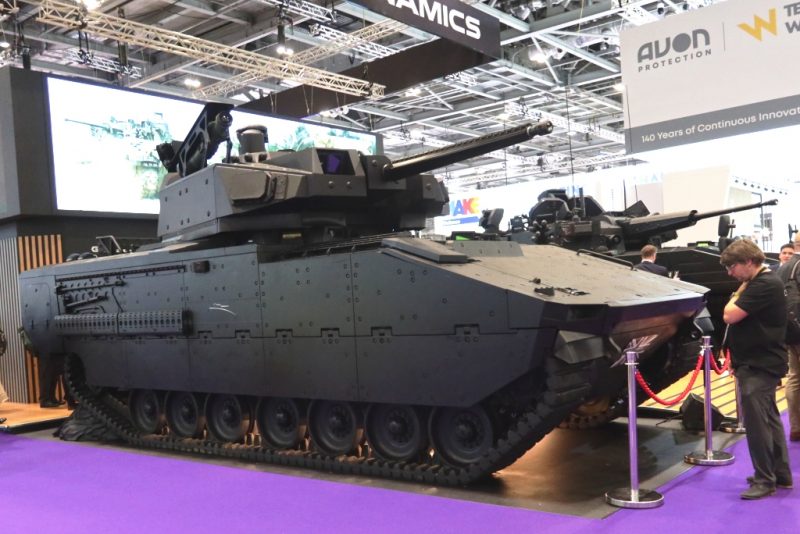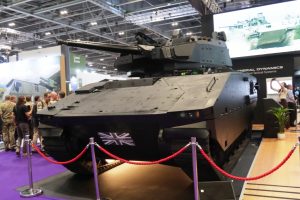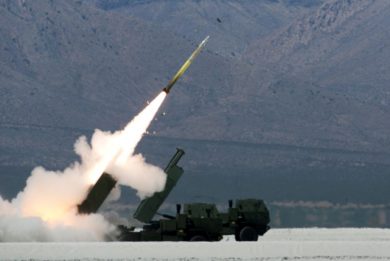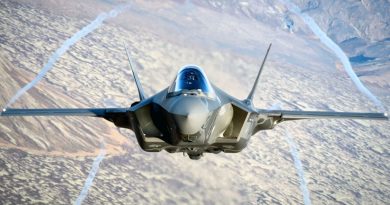DSEI 2025 – General Dynamics Land Systems and Lockheed Martin unveil Ajax Infantry Fighting Vehicle
DSEI 2025 marked the première for the latest variant of the Ajax tracked vehicle, the Ajax Infantry Fighting Vehicle, which sees the General Dynamics Land Systems chassis coupled with a Lockheed Martin turret, the new version being proposed firstly to the British Army as the potential successor of the legacy Warrior
Following the cancellation of the Warrior Capability Sustainment Programme, WCSP in short, the British Army armoured units remained with their Warrior IFVs, which first appearance on the field dates back to exercise “Lionheart” that took place in Germany in September 1984, 41 years ago. General Dynamics and Lockheed Martin teamed to develop an IFV version of the Ajax, which may become the replacement of tracked fighting vehicles in service with the British Army, the industrial team obviously also looking at the export market, in a moment where this type of platform is much needed by the land forces of many countries.
The Ajax IFV leverages the heavy investments made in the early 2000 by the UK MoD and industry on the WCSP programme, as well as the continuous investments made by General Dynamics that led to the Blackjax, the next generation technology demonstrator also shown at the London exhibition.
Starting from the chassis, this is an evolution of the Ajax platform, although it retains most of the subsystems in use with vehicles already delivered to the British Army, the service having accepted to date 147 vehicles. Among the unchanged items we find the whole powerpack, as well as many other core elements, which would allow to ease the logistic, training and support burden. Potentially a crew operating on today Ajax could operate the IFV with very little or no further training. Another key element, the electronic architecture, is also heavily based on that of the Ajax, with some improvements that would require minor requalification work, EDR On-Line understood.
Among new features we find rubber tracks, provided by Soucy of Canada, which are also fitted to the Blackjax, the Ajax IFV also featuring the self-adjusting track tensioning system also shown on the demonstrator but not fitted on the baseline Ajax.
The new infantry fighting vehicle carries a crew of three, all in the hull, plus eight dismounts, and is fitted with the same three amour kits developed for the current Ajax, although modularity will allow further developments.
Coming to the unmanned turret, this leverages heavily on WCSP investments, the first obvious one being the choice of the gun, which is the CT40 by CTAI, which was acquired in numbers by UK MoD before the upgrade programme was cancelled, EDR On-Line understanding that a considerable number of those weapons remain in stock at MoD premises.
The gun is fitted with a new thermal sleeve, which according to Lockheed Martin experts not only ensures a lower thermal signature, but also increases barrel life. Heavily based on the WCSP turret, that of the Ajax IFV has however be redesigned with modularity in mind; this would allow easy adaptation to customers requirements, the turret being able to host 25 mm, 30 mm and 40 mm cannons.
The development vehicle, work is still underway and some elements have yet to be defined, ED On-Line understood, is fitted with one Javelin missile, the launcher being located on the right; this can be replaced by another type of antitank missile or by a loitering munition of similar size. Although primarily an unmanned turret, Lockheed martin defines it as “optionally manned” as the company considers a manned version with the addition of a basket and crew stations. New capability insertions, such as short range air defence, as well as under armour loading, are being considered.
On the development turret both the gunner sight and the commander panoramic periscope are provided by Thales, the two allowing hunter-killer operating mode. Lockheed Martin is considering other capability insertions, such as its SkyKeeper BMC4I solution. An Elbit Systems Iron Fist active protection system is installed on the turret, which would provide 360° protection for the vehicle against most incoming threats. As for passive armour, the turret being unmanned protection level can be lower compared to that of manned turrets; EDR On-Line understood that the armour kit has not yet been fully defined, as the turret is still in the design phase. It is however considered at a high TRL, as it is an evolution of the WCSP one, Lockheed Martin defining it “fireable”. While underlining the very fruitful cooperation with General Dynamics, Lockheed Martin considers the turret, which is fully produced at Ampthill, Bedfordshire, as a stand-alone product and is ready to discuss its integration on other platforms, as it is fully platform agnostic. Due to the minimum differences with the original WCSP turret, the company considers that qualification time and cost should be contained. Further prototypes will be produced in 2026, which will start the iterative process that will lead to the fully developed turret, a process that will obviously involve also the potential launch customer, the British Army.
No indication of mass, neither for the turret nor for the whole system were provided, the vehicle being still in the development phase.
Photos by P. Valpolini







